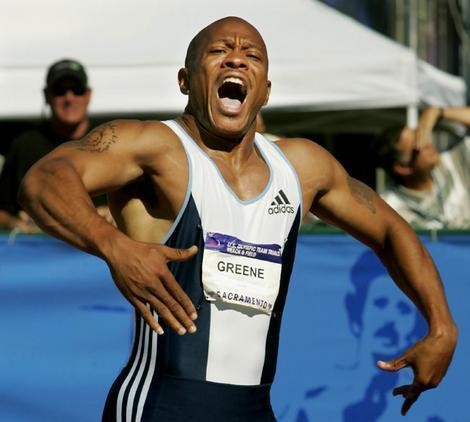High 5 for Better Performance
I always find it interesting the different pre-game/race rituals of the various athletes we work with.
Some are very quiet and keep to themselves before competition. There is not a lot of talk or action. They may be bundled up in layers to stay warm with buds in their ears to block out distractions.
And then there are those that can't wait to be let loose. They are bouncing around, loud and may even be a little bit obnoxious. American sprinter Maurice Green comes to mind when I think of this type of athlete.
We all can probably identify with one type or the other. For me, I always preferred to be quiet, calm and at rest before a race. I would go over the race in my head and visualize what a good race would look like, how it would feel and what I wanted to do to ensure success.
So what is the goal?
The graph below, the Yerkes-Dodson of Arousal and Performance, explains this well.

On this graph the x-axis (horizontal) shows the level of emotional arousal from low on the left side and high on the right side. The y-axis (vertical) depicts performance with low at the bottom and high at the top. For maximum performance we should seek a medium level of emotional arousal.
In the past, we've heard that we need to 'put on our game face' in order to perform. And for some that appear a little sleepy or lazy this may be the case. But for those are already 'amped' up we may not need more stimulation.
You may have seen instances where athletes use smelling salts prior to competition. This would be when an athlete 'feels' they are the left side of the graph, and thus below optimal performance.

On the right side of the graph we have a situation where athletes are overly aroused and thus performance could be compromised. We could think of this in terms of an athlete that is overly excited and thus is compromised in terms of their ability read and react to a stimulus.
So what can we do for the athlete that lives on the far side of the graph and is overly aroused? Tom Brady might have the answer.

A 2019 study looked at the effect of a high five on psychological performance in athletes (1). What they found was a decrease in cortisol levels (a stress hormone) and some increase on motivation, strength and also helps to increase testosterone. If you are an athlete you can relate to the positive vibe associated with high fiving a coach, team-mate or supporter.
Another option would be the RPR system of Chris Korfist, Cal Dietz and JL Holdsworth (2). This program is based on the premise that most of us exist in a condition of survival or fight/flight. In this state there are limits on how we can perform and we develop compensatory patterns. This leads to potential injury and impedes performance.
The last thing to mention is to remember that there is training and there is competition. Not all training sets are meant to be all-out, best performances. And not all competition requires the same level of arousal. For example, it wouldn't be unusual for the 100 m sprinter to be highly aroused and do a number of high knees tucks before settling into the blocks at the start. The same tactic before the start of the marathon would be very unusual however. So remember to distinguish between competitive events that are short duration, explosive and those that are longer duration and look to achieve the appropriate level of arousal.
References
- Lautenbach, F., Jeraj, D., Loeffler, J., & Musculus, L. (2019). Give Me Five? Examining the Psychophysiological Effects of High-Fives in Athletes. Applied psychophysiology and biofeedback, 44(3), 211-219.
- https://www.reflexiveperformance.com/about
When you subscribe to the blog, we will send you an e-mail when there are new updates on the site so you wouldn't miss them.

Comments